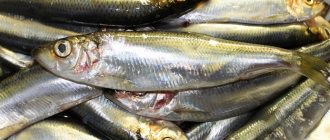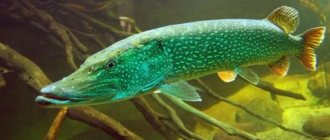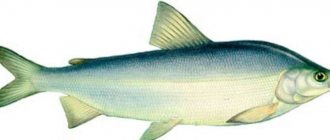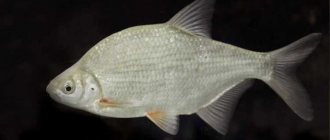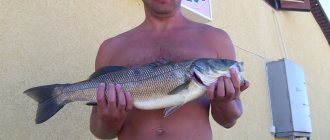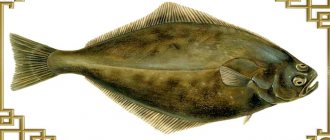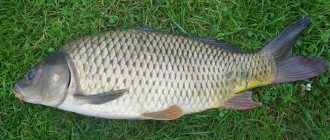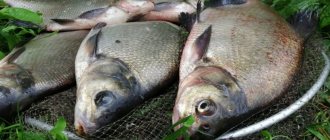The Pacific Ocean is located on the largest expanse on the planet - it exceeds the territory of the continents by almost 30 million kilometers. Its waters flow around 5 continents and account for 53% of the total volume of water on the planet. The vast area of the ocean and its ancient age are the reasons for the special richness and diversity of fish. The Pacific Ocean is home to almost 50% of all species of marine animals in the World Ocean, so life here is lush and diverse - 3-4 times more abundant than in other waters.
Shark and shark discord
Sharks can rightfully be considered the oldest fish in the Pacific Ocean. They crossed the oceans long before the dinosaurs conquered the world. The first of them existed almost 400 million years ago, and 200 million years ago they looked about the same as they do today. There are hundreds of species of sharks. Some of them live on the seabed, others live at medium depths or near the surface. The difference in size is noticeable: from the 20-centimeter small dwarf shark to the 14-meter whale shark, the largest fish in the world.
They mainly feed on:
- fish,
- shellfish,
- octopuses;
- crayfish.
Whale sharks and giant or gigantic hammerhead sharks feed on plankton, drawing it in with water through a tiny throat, and the largest predators, for example, the great white, eat seals, penguins and dolphins.
Typical for sharks are one or two dorsal fins, five to seven gill slits and a revolving bite: they have several rows of sharp cone-shaped teeth - small in dwarfs and whales, huge in whites. Teeth are restored throughout life. One of the reasons why sharks are considered successful predators of the seas is their phenomenal senses. They hear very well, see in the dark better than cats and have a fantastic sense of smell: hundreds of meters away they can detect the smell of their prey, often even a drop of blood is enough.
Although sharks are portrayed as monsters of the seas, these cartilaginous fish are more often the victims of humans. Shark fin soup is known to gourmets all over the world, and liver fat is used to improve health and maintain beauty. As a result of human activity, some of their species have almost disappeared, some are listed in the International Red Book. Therefore, mass commercial fishing on them is closed.
Blue shark
The sixth position is in the blue, or as it is also called, blue shark (Prionace glauca). One of the most common and fastest species of sharks. Its speed can reach up to 69 km/h.
The shark is 4 m long and can weigh more than 200 kg. The predator's favorite delicacies include cephalopods, crustaceans, small fish species, and seabirds. Blue sharks have the most extensive habitat. They inhabit the shores of almost all continents.
Blue shark
With suckers and parrot beak
The huge Humboldt squid, which lives in the eastern Pacific Ocean, is terrifying in size. The largest specimen caught reached 18 meters in length! Moreover, the size of the mantle exceeds 2.5 meters. Of its ten three-meter tentacles, eight have a double row of suckers, and the remaining two tentacles reach 3.5-5 meters, stretch up to 15 meters and bear four rows of suckers only at the thickened ends. The monster-like squid is capable of releasing an inky liquid that darkens the dark depths. Comparable in size to a small sperm whale, it often engages in fights with it .
The diet of the squid living at great depths consists of deep-sea fish and invertebrate animals. While feeding in a flock, they can attack their own relatives, injuring or devouring them. People consider giant squids to be very aggressive animals. Divers talk about cases of attacks on scuba divers. But extremely little is known about them and their way of life due to their inaccessible habitats.
It has been established that giant squids move in large schools - up to 1200 individuals. The animals have the ability to change colors, often emitting red and white light, for which they received the name “red devil” from fishermen.
Description and characteristics of marine fish
The seas occupy vast territories; temperature fluctuations occur here differently. This affects the lifestyle of marine inhabitants. At different depths, the characteristics of different fish species differ. The main differences from freshwater populations can be identified:
- For the inhabitants of rivers and lakes, differences in water temperatures are of great importance. For fish in the seas, the wind is a more important factor.
- Individuals living in salt waters are often massive and larger in size compared to freshwater species.
- Marine representatives are characterized by a more active lifestyle, therefore, when fishing at sea, the bite is more intense.
The wind creates waves, the fish feels the vibrations of the water masses. Under unfavorable weather conditions, schools may burrow into the sand, hide in rocks, or go deeper away from the shore. The inhabitants of the seas catch weather changes before people.
After a storm, experienced fishermen go hunting. During this period, fish emerge from hiding in search of food. Due to severe hunger, individuals bite on any bait.
Blue-ringed octopus
Like the squid, it belongs to the class of cephalopods because its legs, or rather its tentacles, are located directly on its head. These are the oldest living creatures on Earth, they have been swimming the oceans for 550 million years. Blue-ringed octopuses are not very large—the largest reaches only 20 centimeters. But this is a very aggressive and poisonous creature: a strong poison is injected into the victim, softening the insides, and the flesh is sucked out. The mollusk hunts from ambush. An octopus bite paralyzes and kills a person.
The danger is that it is almost invisible on the seabed, and its bite does not cause pain. People often miss the point of asking for help. Next comes paralysis, followed by cessation of breathing. Therefore, it is better to move through shallow water very carefully. In a calm state, the skin of octopuses is light or dark brown with a marbled pattern. Instantly changing color, they demonstrate aggressiveness.
The blue-ringed octopus lives up to its name by being covered in blue rings when frightened and irritated. They mainly live on the seabed at a depth of 200 meters and on rocky shores. Octopuses crawl along the bottom, moving on tentacles, like on stilts, and like to hide in rock crevices. They feed on crabs, small fish and shrimp.
Striped Lionfish or Zebra
It was named so because of its well-developed pectoral fins that resemble wings. Its habitat is tropical waters with coral reefs and lagoons. The body of the predatory fish reaches a length of 30 centimeters, but larger individuals are also found - up to half a meter.
An elegant representative of the Scorpion family is protected by long ribbons of fins - luxurious fans hide prickly poisonous needles. The injection of such a needle causes paralysis: at the injection site, the tissues swell and die, which can lead to gangrene. Associated symptoms:
- blisters;
- nausea and vomiting;
- dyspnea;
- high blood pressure and loss of consciousness.
Diving enthusiasts should be aware that lionfish venom remains active for some time after death.
But the lionfish is quite inert: it spends a lot of time lying on the bottom and does not pose a danger if it is not touched. Hunts mainly at night.
The lionfish feeds on small fish and crustaceans, sucking them along with water into its open mouth. Staying above the very bottom, the bright predatory fish looks like an attractive coral bush, attracting small fish. Curiosity costs them dearly, as does inexperienced divers.
Swordfish
A predatory fish with a powerful body and a greatly elongated upper jaw. The average individual reaches a length of up to 3 meters, although there were also specimens up to 4.5 m, the maximum body weight of the fish was recorded at up to 650 kg.
The swordfish is a hermit and only mates during the breeding season. The inhabitant of the seas and oceans often migrates in search of a warm place and therefore can reach speeds of up to 65 km/h. Prefers tropics and subtropics.
Interesting: a fish can independently maintain its body temperature even in cold water, while only its brain and eyes heat up. This allows you to see food even in low light conditions.
Longfin mackerel
Many people think that longfin horse mackerel is the fish that is caught in the Pacific Ocean. However, this is not quite true.
It looks like an ordinary mackerel, silvery, with dark gray stripes, but is distinguished by a luxurious fan of long and hard rays of the dorsal fin. Interestingly, fish meat does not attract fishermen. But, having caught the “peacock”, they rush to take a photo with it in order to immediately release the sea creature.
The fish in the photo has impressive dimensions - up to 130-160 centimeters, with such a length its weight reaches 50 kilograms . Swimming at the surface of the water near the shore or beaches, the “peacock” spreads its fin. Going into deeper waters, he folds it. The ridge of rays has different lengths and indicates the age of the fish. The number of rays in it also varies - from 7 to 10.
Its habitat is the warm waters of the eastern zone of the ocean. Peacock fish are quite rare. It feeds on small fish and crustaceans, but a large representative can also swallow large mullet or mackerel. Its population today is small. It is often found in the stomachs of large fish.
Stegasthes inimitable
Its habitats are coral and rocky reefs. The body of an adult fish is brownish or charcoal gray, sometimes with a yellowish tint and blue dots. The tips of the dorsal, anal and caudal fins are also yellowish. Another feature of this beauty is the prominent black spot with blue edges on the anterior half of the dorsal fin. Juveniles are especially striking, with an orange back and large dark spots on the dorsal fin.
Adult stegasthes are highly territory dependent and aggressive, actively attacking other fish and invertebrates, predators and even divers approaching their feeding areas or spawning grounds. They graze small invertebrates that live in rocks, including tube worms and small crustaceans - this is their menu. It also includes the stinging tentacles of sea anemones and red and green algae.
Small, palm-sized fish are also called farmer fish. Interestingly, they grow “lawns” of algae that they feed on. By controlling their growth, farmer fish “weed” their “lawns”, removing plants they do not need, cultivating only the necessary ones.
Deep sea anglerfish
This family of fish includes about 50 currently known species. They are found exclusively at great depths in tropical and subtropical regions of the oceans, including the Pacific Ocean. The strange, eerie appearance of anglerfish is needed to make them invisible to potential prey . They may well look like:
- overgrown stone;
- coral;
- sponge or even a sea shell.
Anglerfish are camouflaged by their shapeless body, color and “fishing rod” - a long ray of fin hanging in front. At the end of the “fishing rod” there is a bag with glowing bacteria, onto which the prey swims.
This camouflage is so perfect that slugs even crawl on the fish. It also allows you to protect yourself from predators. Fish are able to adapt their color to their environment and spend a long time - up to several days - in one place.
Anglerfish of the southern seas feed not only on fish, but also on shrimp and their relatives. They can eat fish larger than themselves. Anglerfish feed no more than once a week, sometimes less often.
The Pacific Ocean still holds many secrets. Until now, in its depths, researchers have found creatures unknown to science. Thus, making it clear what kind of fish live in the Pacific Ocean is quite difficult, because there are thousands of different species, the complete list of which is still unknown.
Tripod fish
The fish that live in the ocean are so diverse that there is simply not enough time to list and describe them. We have collected information about the most interesting and unique creatures, including the amazing tripod fish. In its appearance it really resembles this device.
Ocean fish inhabit all layers of water, and the tripod is one of the deepest sea creatures; it can be seen at a depth of up to six thousand meters. It is small, can grow up to thirty centimeters in length, and its distinctive feature is its long and thin lower fins, which it firmly fixes in the muddy bottom in order to stand against the current and wait for the food to swim into its mouth. There are three of these fins, and they serve not only for support, but also for swimming. This fish has ray-like fins on top, with which it captures prey floating from above and, after making sure of its suitability as food, directs it directly into its mouth.
